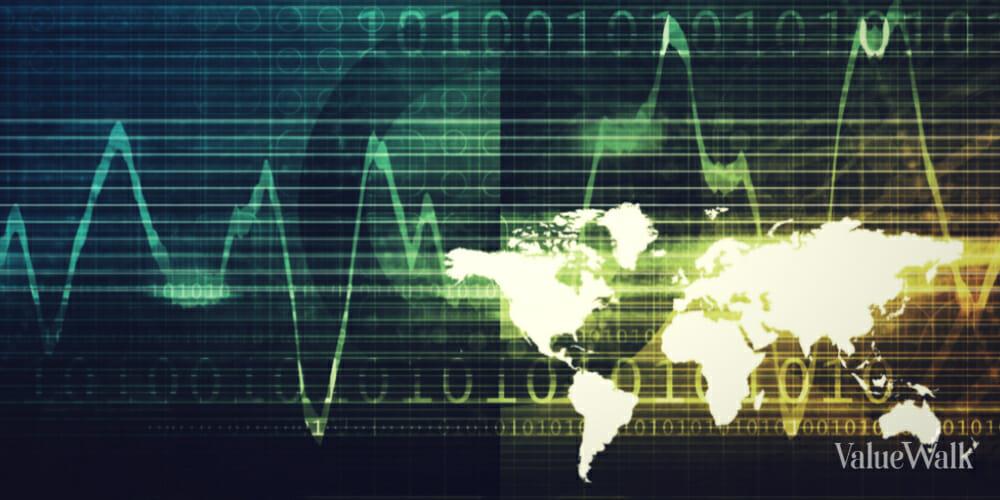
Animated Chart: G7 Vs. Brics By Gdp (Ppp)
| Global GDP Share | 1992 | 2002 | 2012 | 2022 |
| BRICS | 16.45% | 19.34% | 28.28% | 31.67% |
| G7 | 45.80% | 42.34% | 32.82% | 30.31% |
A major contributing factor to BRICS' rise is Chinese and Indian economic growth.
After a period of rapid industrialization in the 1980s and 1990s, china's exports got a significant boost after it joined the World Trade Organization in 2001. This helped China become the world's second largest economy by 2010.
India's economic rise has not been quite as swift as China's, but by 2022, the country ranked third with a gross domestic product (PPP) of $12 trillion . Together the two countries make up nearly one-fourth of the PPP-adjusted $164 trillion world economy.
The consequence of using the ppp metric -which better reflects the strengths of local currencies and local prices-is that it has an outsized multiplier effect on the GDPs of developing countries, where the prices of domestic goods and services tend to be cheaper.
Below, we can see both the nominal and PPP-adjusted GDP of each G7 and BRICS country in 2023. Nominal GDP is measured in USD with market-rate currency conversion, while the adjusted GDP uses international dollars (using the U.S. as a base country for calculations) which better account for cost of living and inflation.
| Country/Group | Membership | Nominal GDP (2023) | PPP GDP (2023) |
| U.S. | G7 | $26.9T | $26.9T |
| Japan | G7 | $4.4T | $6.5T |
| Germany | G7 | $4.3T | $5.6T |
| UK | G7 | $3.2T | $3.9T |
| France | G7 | $2.9T | $3.9T |
| Italy | G7 | $2.2T | $3.2T |
| Canada | G7 | $2.1T | $2.4T |
| China | BRICS | $19.4T | $33.0T |
| India | BRICS | $3.7T | $13.0T |
| Brazil | BRICS | $2.1T | $4.0T |
| Russia | BRICS | $2.1T | $5.0T |
| South Africa | BRICS | $0.4T | $1.0T |
| G7 Total | $46.0T | $52.4T | |
| BRICS Total | $27.7T | $56.0T |
By the IMF's projections, BRICS countries will constitute more of the world economy in 2023 ($56 trillion) than the G7 ($52 trillion) using PPP-adjusted GDPs.
How Will BRICS and G7 Compare in the Future?China and India are in a stage of economic development marked by increasing productivity, wages and consumption, which most countries in the G7 had previously enjoyed in the three decades after World War II.
By 2028, the IMF projects BRICS countries to make up one-third of the global economy (PPP):
| Country by GDP (PPP) | Membership | % World Economy (2028p) |
| U.S. | G7 | 14.5% |
| Japan | G7 | 3.3% |
| Germany | G7 | 2.9% |
| UK | G7 | 2.1% |
| France | G7 | 2.0% |
| Italy | G7 | 1.7% |
| Canada | G7 | 1.3% |
| China | BRICS | 19.7% |
| India | BRICS | 8.6% |
| Russia | BRICS | 2.6% |
| Brazil | BRICS | 2.2% |
| South Africa | BRICS | 0.5% |
| G7 Total | 27.8% | |
| BRICS Total | 33.7% |
The economic rise of BRICS carries geopolitical implications as well.
Alongside different political ideals, BRICS' increasing power gives its member countries financial muscle to back them up. This was put into sharp perspective after the 2022 Russian invasion of Ukraine, when both China and India abstained from condemning the war at the United Nations and continued to buy russian oil .
While this is likely concerning for G7 countries, the group of developed countries still wields unparalleled influence on the global stage. Nominally the G7 still commands a larger share of the global economy ($46 trillion) than BRICS ($27.7 trillion). And from the coordination of sanctions on Russia to sending military aid to Ukraine, the G7 still wields significant influence financially and politically.
In the next few decades, especially as China and India are earmarked to lead global growth while simultaneously grappling with their own internal demographic issues , the world order is only set to become more complex and nuanced as these international blocs vie for power.
Article by visual capitalist
get access to the exclusive strategies used by leading hedge funds to maximize upside, while managing risk (get 7 days for free) click here
Legal Disclaimer:
MENAFN provides the
information “as is” without warranty of any kind. We do not accept
any responsibility or liability for the accuracy, content, images,
videos, licenses, completeness, legality, or reliability of the information
contained in this article. If you have any complaints or copyright
issues related to this article, kindly contact the provider above.


















Comments
No comment